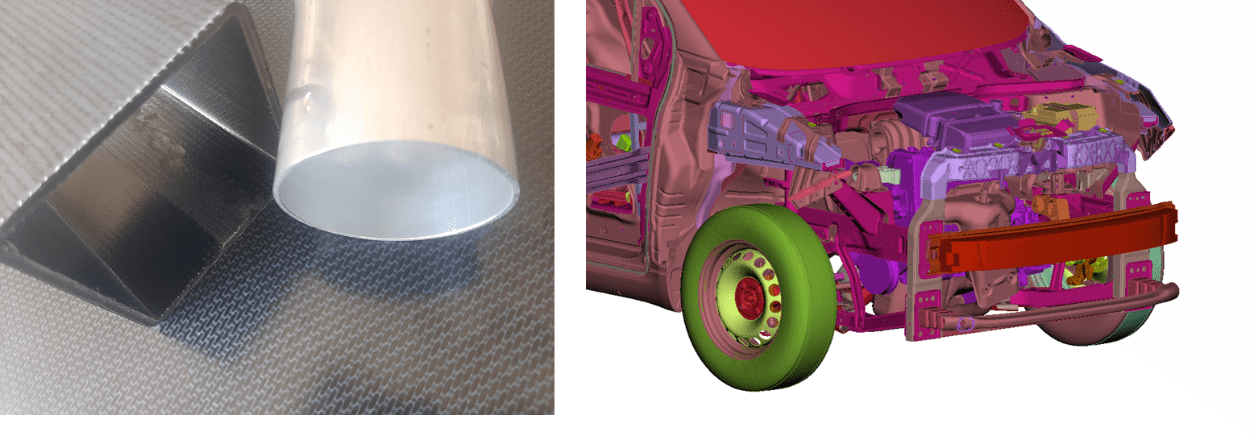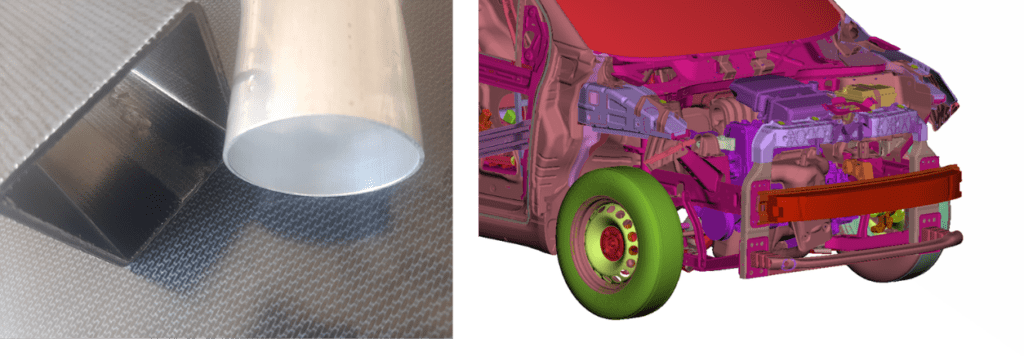
CIDAUT, together with the partners of Salient Project, is tackling the new challenges of the forthcoming connected and automated vehicles’ crashworthiness. The new skills of the connected and automated vehicles will allow to significantly reduce the number of accidents and fatalities in our roads, but the zero crashes scenario is still far away. In the meanwhile, the communication among vehicles, V2V technology, will be a useful tool to have some pieces of important information some milliseconds in advance of the crash event.
This information will allow the absorption elements of the vehicle to give an active response to the impact they are about to suffer. But to obtain this active response, a deep research and development work is needed in order to select the right material and the optimum geometry for each of the components that shape the structure of the vehicle.
At the same time, the project aims to find a sustainable solution, and attending to this is looking for recyclable light materials, as composite, aluminum or the combination of both, taking into account the whole life cycle analysis of the components and looking for circular economy compliant solutions. In order to select the most suitable material a detailed characterization campaign of different grades of composite and aluminum is being performed to know their static, dynamic, cyclic, fatigue, thermal and impact properties, which will conduct to obtaining accurate material cards to be implemented in advances software tools that will allow to optimize the geometry of the different components involved in the passive safety behavior of the automated vehicles and also to use the right material in the right position.
The research leading to this results has received funding from Horizon Europe under Grant Agreement nº 101069600
